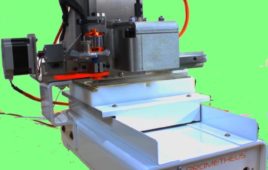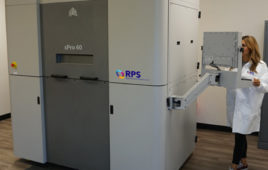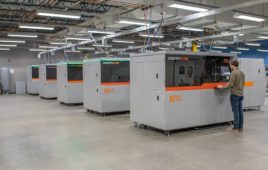Researchers from North Carolina State University have come up with a low-cost way to enhance a polymer called MEH-PPV’s ability to confine light, advancing efforts to use the material to convert electricity into laser light for use in photonic devices.
“Think of a garden hose. If it has holes in it, water springs out through a million tiny leaks. But if you can eliminate those leaks, you confine the water in the hose and improve the water pressure. We’ve plugged the holes that were allowing light to leak out of the MEH-PPV,” says Dr. Lewis Reynolds, a teaching associate professor of materials science and engineering at NC State and co-author of a paper describing the research.
MEH-PPV is a low-cost polymer that can be integrated with silicon chips, and researchers have long sought to use the material to convert electricity into laser light for use in photonic devices such as optical amplifiers and chemical sensors. However, attempts to do this have failed because the amount of electricity needed to generate laser light in MEH-PPV was so high that it caused the material to degrade.
Now researchers have developed an inexpensive way to confine more light in the material, which lowers the energy threshold needed to produce focused laser light by 50 percent. The researchers did this by sandwiching the MEH-PPV between two materials that have matching indices of refraction, efficiently reflecting light back into the MEH-PPV and preventing light from escaping. This results in lower thresholds for laser light.
“This approach is fairly inexpensive and could also be easily scaled up for large-scale processing,” Reynolds says.
The “sandwich” also makes the material more stable by limiting the MEH-PPV’s exposure to oxygen. This makes the material less subject to degradation due to photo-oxidation, which occurs when materials are exposed to both light and oxygen.
“This is a meaningful step forward for low-cost fabrication of these devices, but further optimization is required,” says Dr. Zach Lampert, a former Ph.D. student at NC State and lead author of the paper. “We’re working on that now.”
The paper, “Enhancement of optical gain and amplified spontaneous emission due to waveguide geometry in the conjugated polymer poly[2-methoxy-5-(2′-ethylhexyloxy)-p-phenylene vinylene],” is published online in Applied Physics Letters. The paper was co-authored by Dr. John Papanikolas of the University of North Carolina at Chapel Hill.
Filed Under: Rapid prototyping




